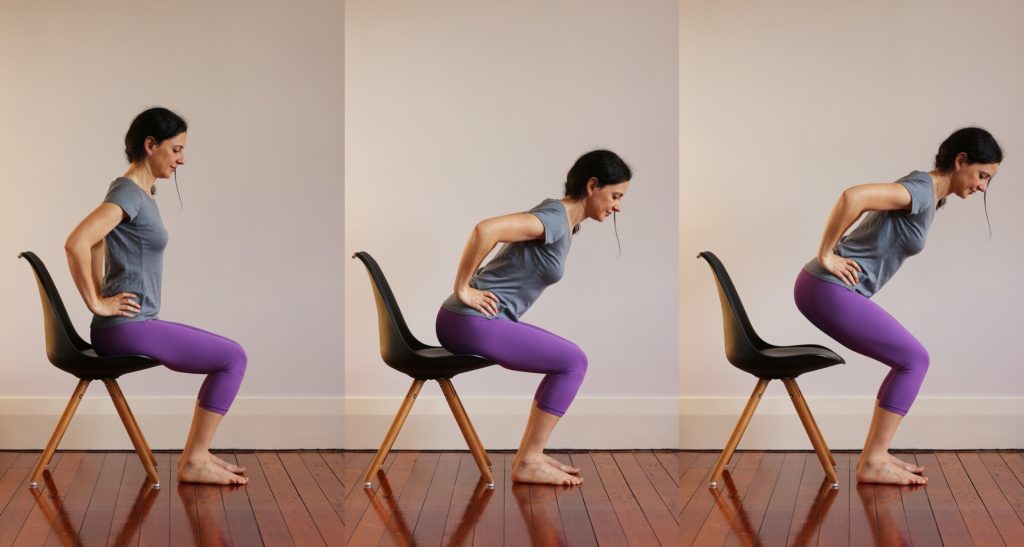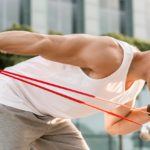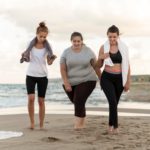
Rahle Dusheiko
Level 2 Iyengar Yoga Teacher, Life Coach (SWITCH Method)
As we approach and arrive in our senior years, exercising hip joints is crucial in helping us maintain agility and mobility.
After the knee, the hip joint is the largest joint in the body. It is crucial for helping you keep balanced and supporting your body weight. Unfortunately, with more sedentary lifestyles we spend a lot of time sitting, leading to potential problems with hip mobility as we age.
If hip mobility is compromised this means walking and doing everyday tasks becomes more difficult and in many cases painful.
We take a look at four different exercises which will help keep the hip joint strong and mobile.
If you are just joining us, we recommend reading Part 1 first.
Rise up: Hands-free chair stand
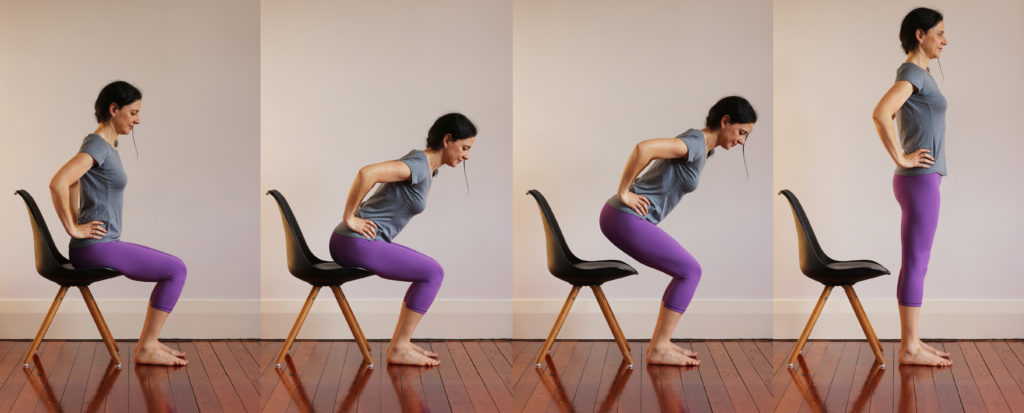
As we get older, it’s important to keep our glute muscles (the muscles of our buttocks), thighs and hips strong to keep the hip joint healthy and mobile.
In this exercise, you will practise getting up off a chair and sitting down into a chair without using your hands.[1] This builds stability and strength in the hip joint which improves balance.
Set up
- It’s best to use a chair without wheels for this exercise. Make sure your chair is secure and steady. If you find this challenging, use a higher, sturdy chair, like a dining room chair, not a couch or sofa. The lower the chair, the harder it will be.
- Sit in your chair forward of the backrest, with just the buttocks, not the thighs on the chair.
- Start your legs and feet a little apart and both feet flat on the floor.
- Place your hands on your hips. (This makes sure you’re using your leg and glute muscles, not your hands to lift you up!)
How to do
- Rise up: Inhale, lean slightly forward, press into your feet, and exhale as you stand up. Squeeze your glute muscles and feel the glute muscles and thighs working to raise you up!
- Sit down: Inhale, bend your knees, send your buttocks far back to the seat, and sit down. Exhale once you are seated. This is one cycle. Sit back down with control, avoiding dropping the last few centimetres. Be close to the chair for safety.
Definition of a cycle:
Rising up and sitting down constitutes one cycle.
Routine:
Start with 5 cycles. Gradually increase to 15 cycles as your strength improves.
Notes
- For more of a challenge: slow down the movements – taking longer to stand up and sit down.
- Sit with control, avoiding dropping the last few centimetres.
- Practise this whenever you sit down or get up but make sure the chair is sturdy and be safe!
Grow Tall: Single-leg balance
This position is great for the hips for two reasons. First, the standing leg works on hip strength. Second, the position of the raised leg works on hip mobility.[2]
See second option for a safe alternative for a hip replacement.
Use the chair for support and stability. Depending on the condition of your hip, you will either keep the foot on the floor or against your standing leg.
Set up
- Stand next to a sturdy chair (with no wheels) with the back rest close to you on the left. Rest the hand closest to the backrest on it for support.
- Only explore taking the hand slightly off the chair to explore the balance if you are stable and confident with balance.
How to do
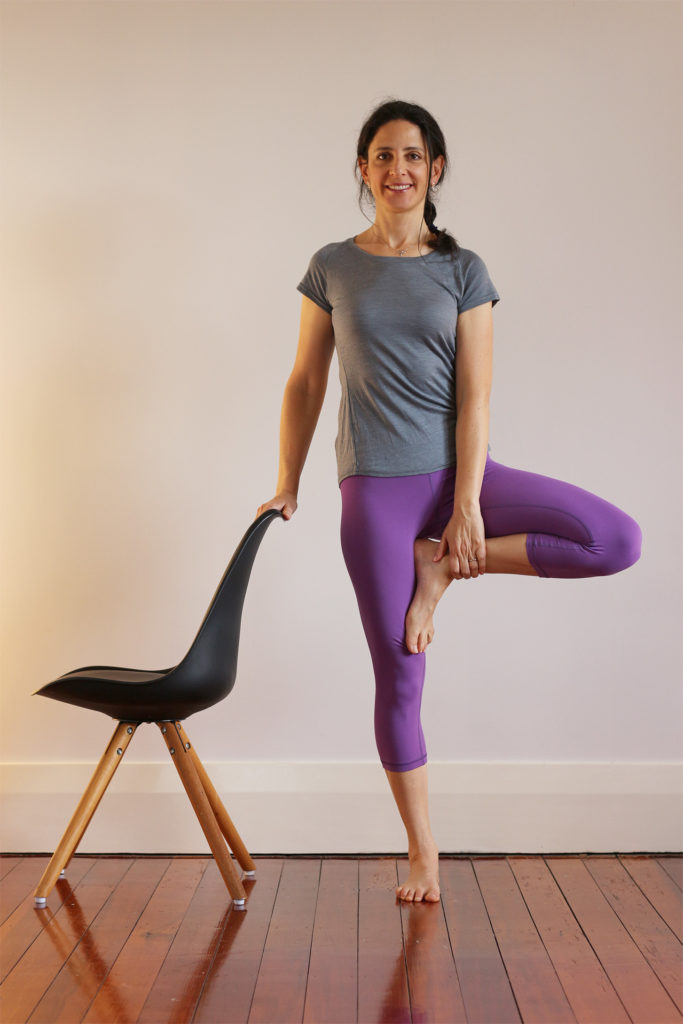
Option 1: Foot against thigh
- Position the chair: Place the chair on your left-hand side. Keep the left hand on the backrest for balance and support.
- Starting stance: Stand with your legs slightly apart, feet parallel and facing forward.
- Shift and balance: Shift your weight onto your left leg, ensuring your hip doesn’t drop to the side.
- Turn out the right leg: Turn your right thigh outward slightly, so the knee points a little to the right.
- Lift the right foot: Lift the right foot, take hold of the right ankle with your right hand and bring the foot to the left, inner thigh. If putting the foot on the inner thigh is not possible, put it lower down against the inner calf.
- Align and hold: Straighten and “grow” your spine upward, maintaining this posture. Hold this position for a few breaths.
- Return and Repeat on the other side: Carefully lower the right foot to the ground, pause, and then switch sides, placing the chair on your right to repeat the process with the left leg.
Notes:
- For more challenge, let go of the ankle and keep the foot pressing against the inner leg.
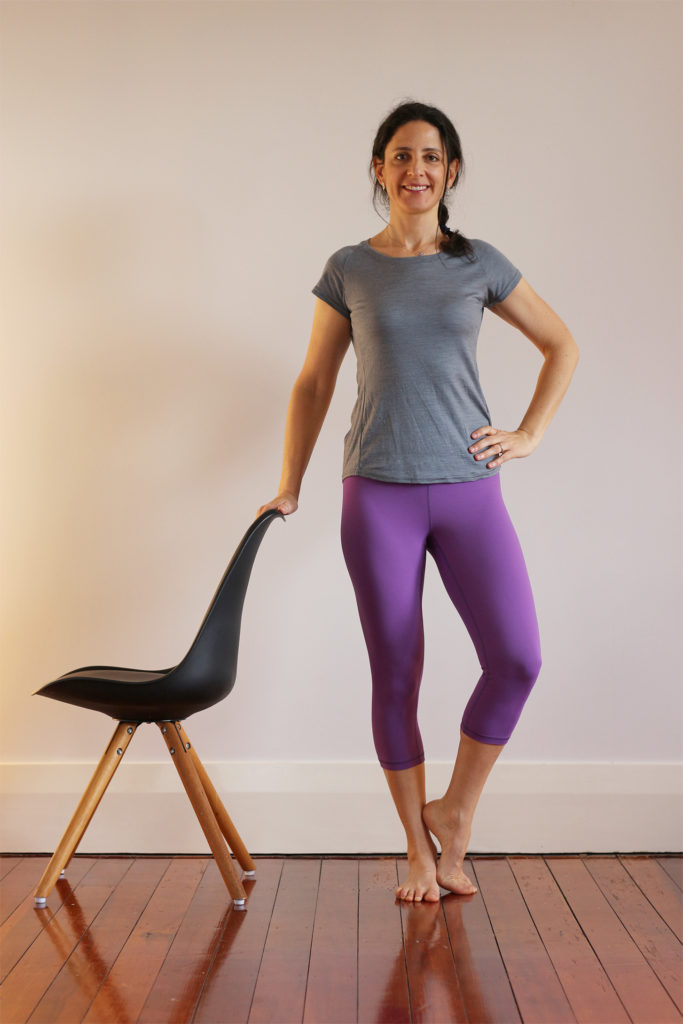
Option 2: Pose for hip replacement
- Position the chair: Place the chair on your left-hand side. Rest the left hand on the backrest for balance and support.
- Starting stance: Stand with your legs slightly apart, feet parallel and facing forward.
- Shift and balance: Shift your weight onto your left leg, ensuring your hip doesn’t drop to the side.
- Turn out the right leg: Turn your right thigh outward slightly, so the knee points a little to the right and bring the right heel to the left inner ankle bone. Keep the toes of the right leg on the floor.
- Align and hold: Straighten and ‘grow’ your spine upward, maintaining this posture. Hold this position for a few breaths.
- Return and Repeat on the other side: Carefully return the leg to neutral, facing forward, pause, and then switch sides, placing the chair on your right to repeat the process with the left leg.
Notes
- Choose the position that is most suitable for your body.
- Use the chair for balance and stability.
Balance: Raised leg with a chair

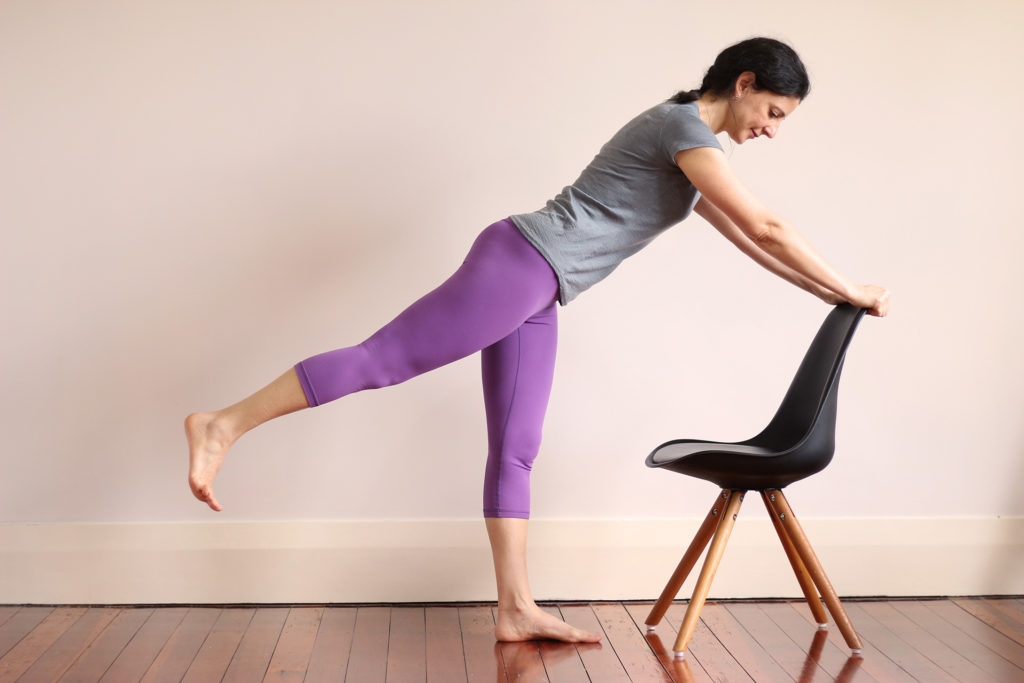
This pose is a little more challenging, it strengthens the outer hip of the standing leg and mobility in the hip of the raised leg. Use a sturdy chair (without wheels) for stability.
Set up
- Stand in front of the chair, legs apart, feet parallel and facing forward to the chair.
- Lean forward and place your hands on the seat of the chair. If this is too low, place your hands on the backrest of the chair.
- Step your feet back until your spine is straight and elongated and your feet are under your hips.
- Maintain the spine, knees and elbows straight.
- Look towards your hands and keep the neck relaxed.
How to do
- Shift and prepare: Gently shift your weight onto your left leg, keeping it vertical to maintain balance.
- Initiate movement: Slowly slide your right foot back, toes just touching the floor.
- Lift the leg: Raise the right leg, keeping your toes pointed downwards so they hover just above the floor.
- Engage core: Draw your navel towards your spine to engage your core, enhancing stability.
- Maintain alignment: Ensure your knee is straight and your hips remain level; avoid lifting the hip of the raised leg.
- Support: Use your hands for balance, focusing on keeping the standing leg steady.
- Breathe: Take a few deep breaths in this position, inhaling deeply and exhaling slowly.
- Return and repeat: Inhale, and upon exhaling, gently slide the right foot back to meet the left, under your hips.
- Switch sides: Change the standing leg to the right, and repeat the steps for the left leg. This is one cycle.
Definition of a cycle:
Raising the right and then the left leg constitutes one cycle.
Routine:
Start with 5 cycles. Gradually increase to 10 cycles as your strength improves.
Notes
- With time and practice, see if you can hold the leg up for longer and increase repetitions.
- The aim is not to raise the leg too high but explore firmness in the standing leg and length of the spine and back leg.
Additional Tips for Improving Balance
Looking after our bodies so we can grow older with grace and confidence extends beyond just the physical movements we do to keep our body strong.
We need to keep healthy on the inside following a wholesome, balanced diet with food rich in protein to help keep our muscles strong.
Calcium and vitamin D are important for bone health and strength. You can get this vital mineral and vitamin from dairy products like milk, cheese and yoghurt but also leafy green vegetables, mushrooms, specific fortified foods and fish.[3]
Conclusion
Maintaining balance and mobility as you age is not just about preventing falls—it’s about preserving our independence, confidence, and overall quality of life. The exercises outlined here, focus on strengthening the core, hips, legs, and spine, all of which are crucial for your stability and safe movement.
Incorporating these simple movements into your daily routine can make a significant difference. Remember, it’s never too late to start, and every little bit helps. By staying active, you’re not only enhancing your physical health but also boosting your mental wellbeing.
So keep moving! Whether it’s practicing these exercises at home, walking with friends, or engaging in activities that bring you joy. Embrace the journey of aging with grace and confidence, and find what inspires and excites you to maintain balance both inside and out.
Disclaimer
Before trying any new exercise, always check up with your healthcare provider that it will be suitable for you. If you feel pain, short of breath or dizzy, stop the exercise and rest. Try again another day.
Rahle Dusheiko is a Wellbeing Guide, certified Iyengar Yoga Teacher, and qualified Life Coach who blends yoga, life coaching, and holistic wellbeing to support balanced living.
With a yoga practice that began in 1999 and certification in 2014, Rahle’s approach extends beyond the mat, offering personalised pathways to health and vitality.
If you would like to learn more about Rahle , see Expert: Rahle Dusheiko.
References
(1) CDC – Older Adult Fall Prevention – Chair Rise Exercise. https://www.cdc.gov/steadi/pdf/STEADI-Brochure-ChairRiseEx-508.pdf
(2) REAN FOUNDATION – Yoga for Seniors: 7 Poses You Can Do Effortlessly. https://www.reanfoundation.org/yoga-for-seniors/#:~:text=The%20tree%20pose%20is%20a,in%20seniors%20with%20tight%20hips.
(3) NIAMS (National Institute of Arthritis and Musculoskeletal and Skin Diseases). https://www.niams.nih.gov/health-topics/calcium-and-vitamin-d-important-bone-health

